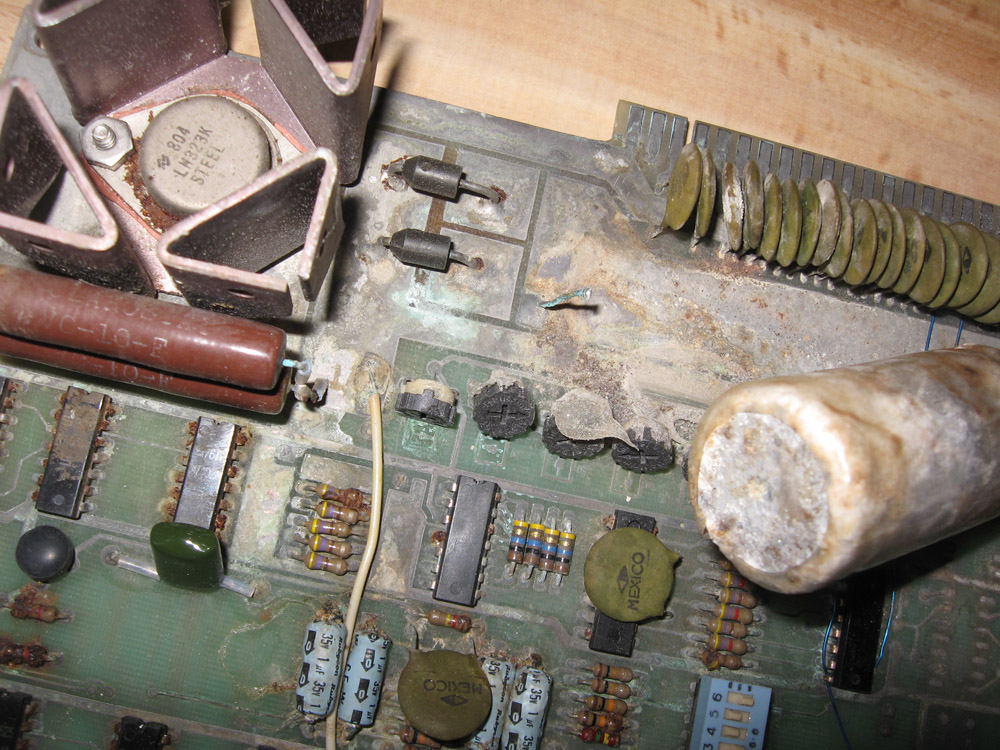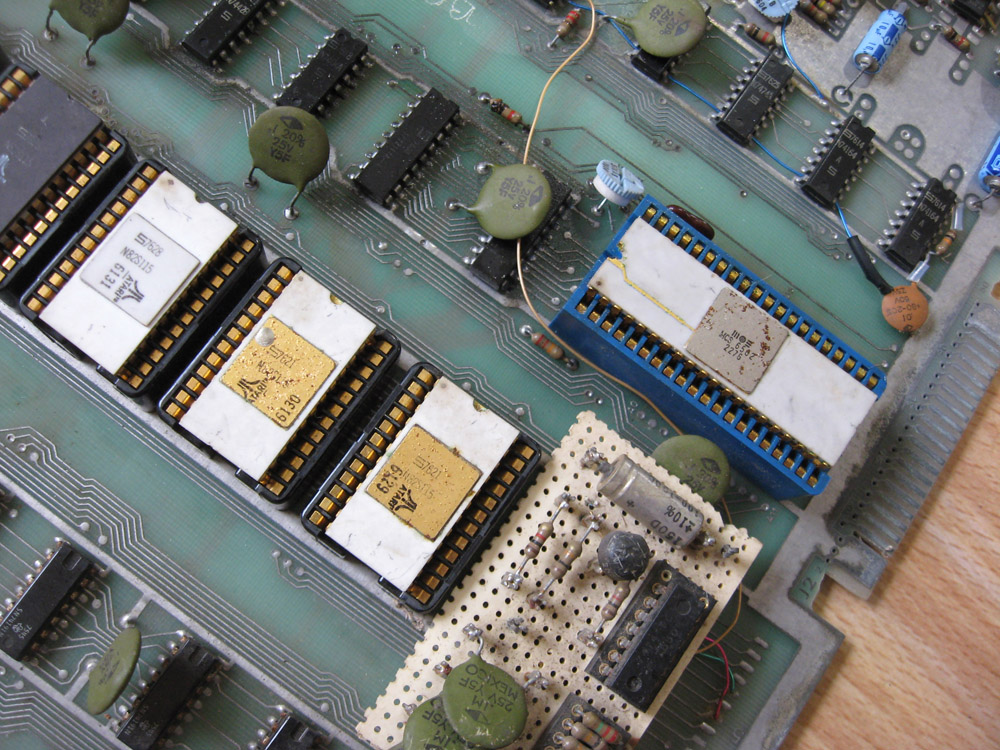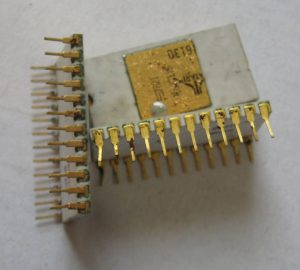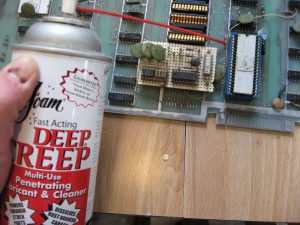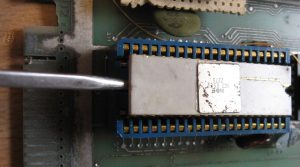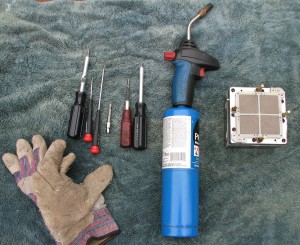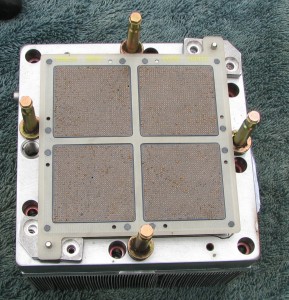Barn Find MOS MCS6502 – A Restoration
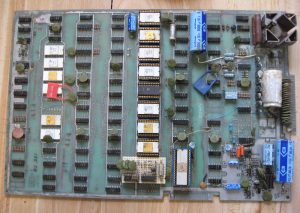 In car collecting one of the ‘holy grail’ experiences is the ‘Barn Find’ finding and recovering a rare vehicle that has sat untouched, in some barn, or shed for some time. They are often in rough, but original condition and can evoke much excitement. As it turns out CPUs are not so different. I recently purchased a very rough and very old ATARI Arcade board.
In car collecting one of the ‘holy grail’ experiences is the ‘Barn Find’ finding and recovering a rare vehicle that has sat untouched, in some barn, or shed for some time. They are often in rough, but original condition and can evoke much excitement. As it turns out CPUs are not so different. I recently purchased a very rough and very old ATARI Arcade board.
The pictures clearly showed it in terrible condition, with lots of oxidation and ‘stuff’ on it. But it also had a white MOS 6502 processor. These are some of the very first CPUs made by MOS and are rather desirable, as in addition to their use by ATARI, they were used in the very first Apple computer, the Apple 1.
When the board arrived it was clearly in bad shape, take a look at that nastiness. What you can’t see, or rather smell, is the cow manure. Clearly this board was in an actual barn at some point. Probably relegated to such a retirement after serving in an Arcade parlor or bar for some time, either that or there was some bovin gaming going on.
You can see there is some oxidation on the lids of the various chips as well. The ROMs and CPU are in sockets. These sockets are nice, they are not a machine socket but rather a LIF, Low Insertion Force Socket, that helps as the pins on these chips are very delicate, and very possibly corroded.
Before attempting to remove the MCS6502 its best to see what I am working with, so I pulled some of the ROMs nearest to the 6502 to see how their pins looks and how easy they came out of their sockets. They came out with not a lot of effort but you can see there is some oxidation on the pins. What we do not want is the pins to be rusted TO the socket and then break off from the forces needed to remove the chip from the socket.
To help mitigate this risk I used some penetrating oil on the pins in the socket. It seems strange to be squirting oil in the socket but it works. It will help penetrate the rust and decrease the force needed to remove the 6502. After adding the oil I let the board sit on my heater in my office for several hours. This helps the oil penetrate, as well as made my office smell like Deep Creep and cow manure, all in a days work.
Then I very gently work on removing the 6502, testing how tight it is and working it out from both ends. It comes looses with very little drama, hopefully with all its pins intact….


